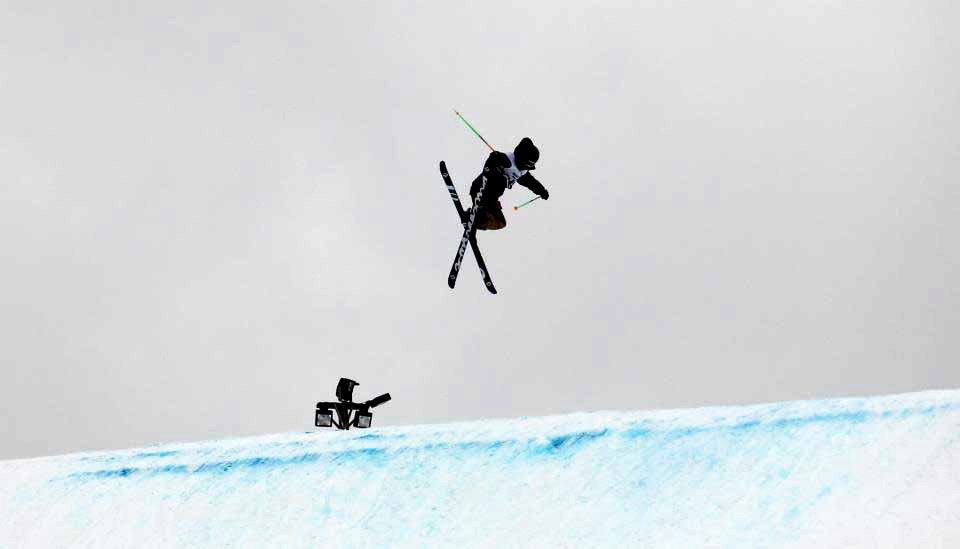
Ski: 2012-2013 Bluehouse Antics, 182cm
Dimensions (mm): 113-83-108
Turn Radius: 20.8 meters
Weight per ski: 3.65 lbs. / 58.5 oz.
Actual Tip-to-Tail Length (straight tape pull): 181cm
Boots / Bindings: Nordica Jah Love 120 / Look Pivot 14 / (DIN) 12
Mount Location: -1cm from true center
Test Location: Park City Mountain Resort, Mount Snow
Days Skied: 18
[Editor’s Note: Our review was conducted on the 11/12 Antics, which is unchanged for 12/13, except for the graphics.]
Bluehouse Skis is an indie brand from Salt Lake City, Utah, that emerged in the park and fat-ski market around 2007.
The focal point of their small line at the time was the MR, a simple, cambered park ski with a basic black, white, and neon green graphic outlining the silhouette of a man dressed in business attire. To me, the graphics symbolized what the brand seemed to be about: a fun, casual ski that you could put to work in the park. They had signed on a few talented, up-and-coming riders from Utah, and it looked like Bluehouse was off to a good start as an emerging brand.
Despite its location in the epicenter of the snow sports industry, however, Bluehouse never quite emerged as a big name in the park and powder ski markets, and the team lineup and ski designs haven’t changed significantly in four years.
But the original MR has been replaced by the Antics as Bluehouse’s general-purpose park ski. It is a light, non-symmetrical park ski with a soft flex pattern.
Right out of the package, the Antics was quite fun. Its minimal sandwich construction made for a light, maneuverable ski that didn’t slow me down when whipping around fast 450s on or off rails or setting big spins on jumps. Like the Rossignol S4, the Antics is quick and snappy, and feels more like an extension of my feet than a more awkward and sluggish ski like the Moment Reno Jib. On rails and jumps alike, this light ski is far from cumbersome and initiates tricks with ease.
Yet I worried that I would have a few issues with the Antics. I guessed by hand flexing the ski that it would butter and press with some applied weight, but would likely flex out on landings if I wasn’t centered over the ski when putting down the landing gear.
Another seeming disadvantage of the Antics was that it’s a directional ski: the Antics’ shovel is wider than its tail by five millimeters, and I was concerned that this would negatively affect the ski’s swing weight and switch performance.
Finally, the four connection points of the edge around the ski were left unconnected and surprisingly far apart, which led me to feel uncertain about potential issues with edge and tip durability.
The first day I rode the Antics was at Mount Snow, Vermont, in late December. The all-park mountain face on the Carinthia side of Mount Snow didn’t have any large jumps, but the abundance of rails and jibs allowed me to see the Antic’s light and playful side.
The Antics were light, buttery, and lively on the little rails and medium-sized jumps, and I enjoyed their light, responsive nature on longer rails, too. I never seemed to mind the asymmetrical shape of the ski when riding switch, as it still seemed to track and take off as well as a symmetrical ski like the Line Stepup.

I headed back to Park City after Christmas, and I brought the Antics to some larger jumps and fast groomer runs that proved to be a greater challenge for the ski. On bigger features, I immediately noticed that the soft flex pattern did not cater to larger impacts , and at times made landing tricks more difficult than usual. The common drawback of a soft, buttery ski is its performance on landings, and unfortunately, this ski was no exception.

edge issues, problem solved… checkmate